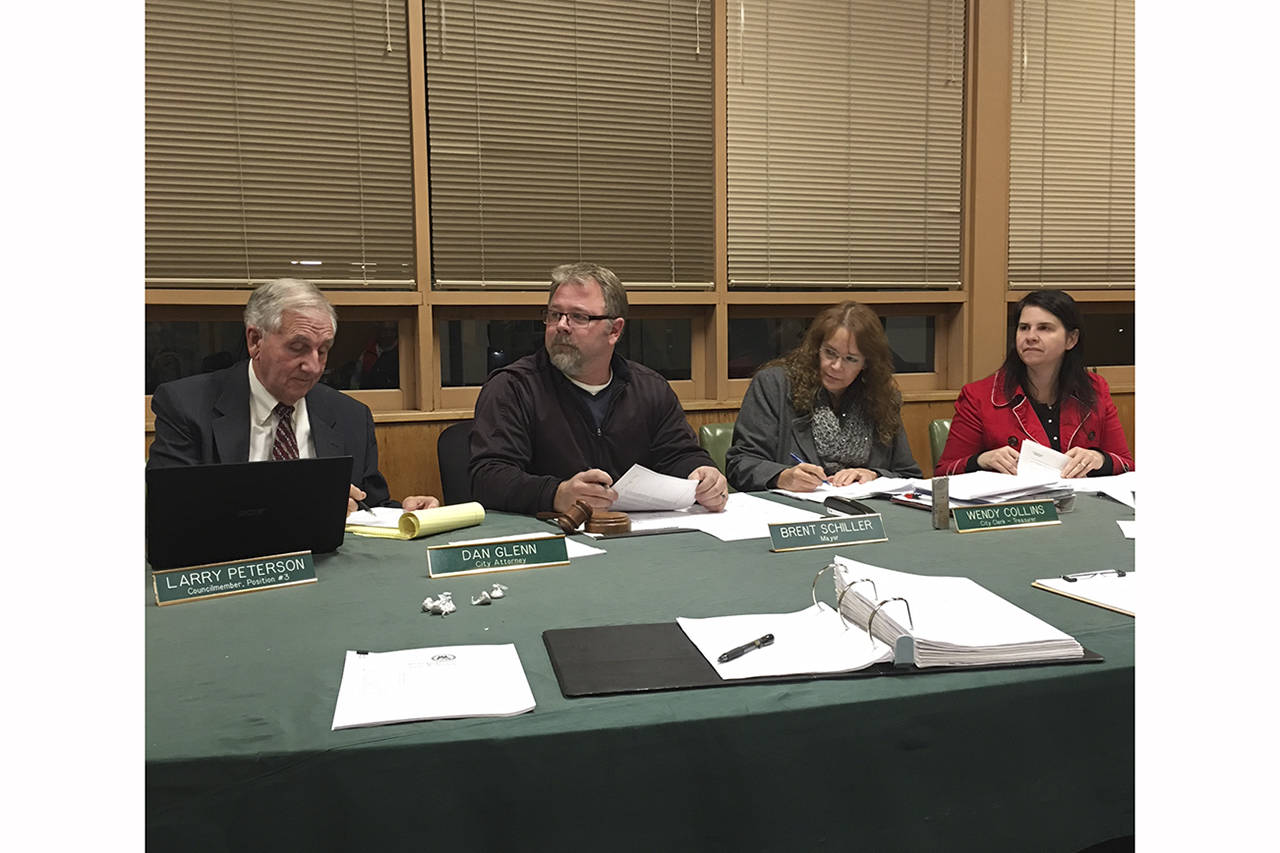The cost of EMS service to the City of McCleary was the focus of discussion at a meeting on Nov. 29 where the 2018 budget was passed by the city council by unanimous vote.
Mayor Brent Schiller reported that Fire District 5, which provides EMS service to the city, has put forward an annual figure of $100,000 as a starting point for contract negotiations. The city’s rate for 2017 for EMS services was $84,850.
Council members balked at the new figure, and the increase comes in the midst of McCleary already facing increased costs related to garbage, electricity, water and sewer.
“We’ll still work with District 5 to negotiate this, but I don’t know where it is going to end up,” Schiller said.
Schiller said he intends to schedule a meeting with the Fire District 5 board of commissioners to review the proposal. The contract between the two entities ends Dec. 31, but Schiller said the agreement allows for the possibility of month-to-month contract arrangements to be made as well.
Other options for EMS service to McCleary are practically nonexistent, Schiller said.
The possibility of passing on costs to the local businesses that tend to generate the most emergency calls was brought up but then dismissed by council members, who expressed the belief that it would prove counterproductive.
McCleary residents currently pay $10.50 month per utility hookup to offset the cost of EMS to the city, and must pay on top of that for any individual use of EMS services.
Contacted by The Vidette, Fire District 5 Chief Dan Prater said costs are calculated using a long-established formula by which revenue to EMS is subtracted from the total cost of services, which leaves what’s called EMS Availability Cost. That number then is broken down further over the district’s four areas of service based on number of calls and cost per call. Fire District 5 provides services not just to District 5 residents, but to residents of the cities of Elma and McCleary and Fire District 12. Prater said that based off the formula the rate to McCleary should be $122,909, but the district’s board understands such an increase would be difficult for the city to manage in one year and is instead seeking a more modest increase in the hope of recovering some of the difference.
Prater said Fire District 5 has been careful about keeping costs down but saw a decrease in transport revenue of about $100,000 in 2017. The decrease, Prater said, is partly because of more transports to the local hospital in Elma rather than to the Olympia-area hospitals, a situation which has resulted in a loss of mileage reimbursement from insurers.
“This loss of revenue, increase in the number of calls for McCleary and the increase in cost, such as dispatching, supplies, personnel cost is what is causing the rate to McCleary to increase,” Prater said.



